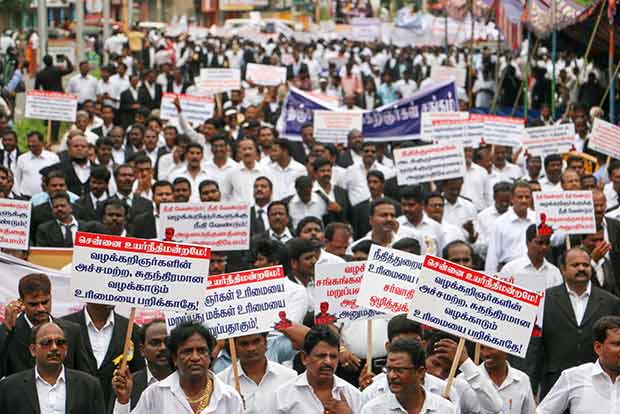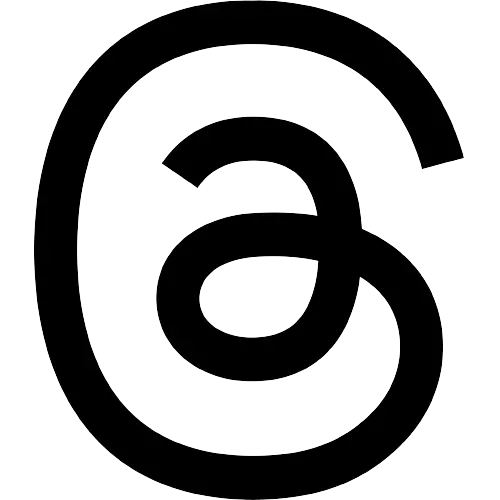Begin typing your search...
Are the lawyers’ demands justified?
Lawyers protesting against the Madras High Court’s amendment to the Advocate’s Act must introspect their actions that have resulted in the present state of affairs

Chennai
The Madras High Court Advocates Association (MHAA) after calling for a protest rally had also passed a resolution that it will not go to the court challenging the rules framed by the Madras High Court under Section 34 of the Advocates Act, 1961. Immediately on the announcement of the rally, Sanjay Kishan Kaul, the Chief Justice of the Madras High Court issued a press note telling the lawyers that the call for rally was unnecessary and there is still time for them to give useful suggestions regarding the rules. He also said that the High Court cannot avoid framing rules especially when the Supreme Court had directed all the High Courts to frame rules under Section 34 of the Advocates Act.
In RK Anand Vs Delhi High Court (29.7.2009), the Supreme Court had directed as follows, “Those of the High Courts which have so far not framed any rules under section 34 of the Advocates Act, shall frame appropriate rules without any further delay.”
Even earlier in Harish Uppal’s case (2003), the Supreme Court had emphasised the power of the High Court to frame rules under Section 34 to deal with the professional conduct of lawyers before the courts. It observed: Section 34 of the Advocates Act gives to the High Court power to frame rules including rules regarding condition on which a person (including an advocate) can practise in the Supreme Court and/or in the High Court and courts subordinate thereto. Many courts have framed rules in this behalf. Such a rule would be valid and binding on all. Let the Bar take note that unless self-restraint is exercised, courts may now have to consider framing specific rules debarring advocates, guilty of contempt and/ or unprofessional or unbecoming conduct, from appearing before the courts. Such a rule if framed would not have anything to do with the disciplinary jurisdiction of the Bar Councils. It would be concerning the dignity and orderly functioning of the courts. The right of the advocate to practise envelopes a lot of acts to be performed by him in discharge of his professional duties. (emphasis added).
However, the leaders of the Bar expressed an opinion that their rally was not against the High Court but to show the solidarity of lawyers in opposing the rules. Curiously, the MHAA also passed a resolution that they will not go to the court challenging the rules though they claimed these rules are appropriating the powers of the bar councils. If the Bar is of the opinion that these rules are ultra vires and they do not want to file cases before Madras High Court which is the author of the rules, they could have moved the Supreme Court. If every section of the society wants to show their solidarity to the court in which their cases are pending, then that will be doomsday for rule of law and independence of judiciary.
The rules as framed by the High Court take exception to lawyers’ conduct in courts and reserves powers to withdraw their licence to practice before the courts. The seven ‘don’ts’ prescribed are:
- An Advocate who is found to have accepted money in the name of a Judge or on the pretext of influencing him; or
- An Advocate who is found to have tampered with the Court record or Court order; or
- An Advocate who browbeats and/or abuses a Judge or Judicial Officer; or
- An Advocate who is found to have sent or spread unfounded and unsubstantiated allegations/petitions against a Judicial Officer or a Judge to the Superior Court; or
- An Advocate who actively participates in a procession inside the Court campus and/or
- Involves in gherao inside the Court Hall or holds placard inside the Court Hall; or
- An Advocate who appears in the Court under the influence of liquor.
No lawyer can claim that they have the fundamental right to indulge in these misdemeanors. Likewise, if anyone found guilty of having committed these acts also deserve to be punished. Licence to practice as an advocate is circumscribed by the conditions imposed by the Advocates Act as well as other enactments.
Two major objections are raised by the lawyer groups. Firstly, according to them, the power to take disciplinary action is solely vested on the Bar Councils and it enjoys autonomy. This argument is facile and the Advocates Act itself shares the power between the Bar Council and the courts. Under Section 49, wherein the professional conduct of an advocate is prescribed, is violated, then undoubtedly the Bar Council can deal with the same. But when it comes to committing a misconduct before the court, the court need not beg the bar council to take action and becomes a complainant before them. On the other hand, the conduct of judicial proceedings is controlled by the Presiding Officer (Judges) and they undoubtedly have power to regulate the proceedings. Even in the absence of power conferred on the courts under section 34 of the Advocates Act, the courts always have power to initiate contempt proceedings against an erring lawyer. Once a lawyer is punished under contempt, unless he is purged of the contempt he cannot practice in any court. However, the initiation of proceedings against a lawyer who commits misconduct during the court proceedings is highly technical. If the judge wants to punish the lawyer, he can straight-away question the lawyer and send him to jail for six months. The procedure is summary and subject to the appeal, the lawyer will have to go behind the bars.
Many times, to avoid a summary procedure the court initiates enquiry for a misconduct defined under Section 34 and finally imposes a punishment which is not a jail term but only a deprivation of his license to practice. Any action of the high court is subject to challenge before the Supreme Court under Article 136 of the Constitution. Hence the argument that the High Court cannot take over the power of the Bar Council is a misnomer. Even under the rules framed by the Bar Council, there are conducts prescribed as to how a lawyer should behave in courts. But so far no lawyer has been dealt with by the Bar Council under these provisions. Apart from this, most of the High Courts in India have framed rules under section 34. For eg. Bombay High Court has prohibited court stoppages by framing a rule under this provision. No lawyers body has every protested against these rules.
Merely contending that some of the rules will stop the lawyers from questioning a judge’s questionable conduct and it will gag them from complaining about their corrupt practice does not take their arguments anywhere. On the other hand, the Supreme Court has devised an “in-house procedure” to complain against erring judges and had assured that the Chief Justice of India will take appropriate action in case of a proper and well-laid complaint. As far as sub-ordinate courts are concerned, all complaints received by the High Court are promptly dealt with and many a time judges have been removed or punished.
The lawyers must do some soul searching about the brinkmanship which they played to bring the present state of affairs. Today, central forces are drawn to protect the courts and judges. This itself shows to what extent they have allowed their unruly members to play havoc on the system. Taking processions inside the court halls, shouting slogans, attacking judges openly and asking for transfer of cases on the basis of the caste of the judge and filing frivolous transfer applications, unending court boycotts and scurrilous and mischievous postings on social media against judges does not augur well for the Bar. For any misuse of the rule by the High Court, there is always a superior court to correct. Further, the offer of the Chief Justice to discuss the rules with the Bar is another olive branch extended to them.
It is high time they leave their militant postures and make use of the negotiating table rather than indulge in mutual acrimony thereby bringing disrepute both to the Bench and the Bar.
The writer is a retired judge of the Madras High Court
Visit news.dtnext.in to explore our interactive epaper!
Download the DT Next app for more exciting features!
Click here for iOS
Click here for Android
Next Story



